How Paul Boomsma Risked it All to Create Unique Nature Shots
We’re streaming daily on Apple Podcasts, Google Podcasts, Stitcher, Pocket Casts, and Spotify! You can also listen to it right here on The Phoblographer.
“I used to put more focus on getting the image and not thinking about my own safety”, says Paul Boomsma about his initial days as a nature photographer. “This resulted in me being in a lot of dangerous and scary situations”. Nowadays though, he plans each trip meticulously to ensure his personal safety, as well as to not disrupt the surroundings he’s headed to.
Want to get your work featured? Here’s how to do it!
I don’t get the opportunity to shoot much wildlife out here in my city of Dubai. Yes, there are a few conservation reserves to photograph the elegant Arabian Oryx and Saker falcons. There’s also the camels that you can spot not too far from the interstate highways, gazing at the cars that whiz by. But I’ve always wanted to take trips to places where wildlife is more varied amongst vivid surroundings. Europe has many locations for this, and Paul Boomsma has made good use of his years as a photographer to see much of what it offers. He started out as a carefree young man, focusing on getting an eye-catching image at any cost. Being stuck in a couple of hazardous and life-threatening situations made him change his approach to that.
By the way, if you need something to give you an inspirational push for the wanderlust in you (just as it did for Paul), I highly recommend watching The Secret Life of Walter Mitty. The mood and feel expressed in Paul’s work below remind me a lot of the visual tone of this movie
The Essential Photo Gear Used by Paul Boomsma

Paul told us:
Because I spend a lot of time hiking and travelling around, I like to pack as light as I can. I also don’t drive and rely on public transport so if I’m away for some time, I’ll also have to pack and carry things like tent, sleeping bag, food, water, clothes and other things. The gear I carry with me will depend on the type of shoot, location and how long I plan to be outside for
The Phoblographer: Expaulore, that’s a catchy name. Please tell us about yourself and how you got into photography.
Paul Boomsma: I’m a 25-year-old outdoor photographer based in South England.
Since a young age, I’ve always had an interest in nature and the outdoors and have been driven to be creative and make things. Before photography, I used to spend a lot of my spare time working with/building computers, programming and creating/designing websites.
As I got older, I started watching travel videos on YouTube and started to enjoy viewing people’s nature and wildlife photos. Inspired by other people’s photos and experiences, In 2015 – I decided to purchase my first budget DSLR and telephoto lens and try and create some images of my own.
I started off photographing small songbirds in my local woods, playing around with the shutter speed, aperture, ISO to see what effect these had on the images. After a lot of patience and trial and error, I started to get the hang of things and took a few photos I was proud of. I found this extremely rewarding and couldn’t wait to get back out and do it again.
I also really enjoyed just observing them, sitting somewhere hidden away on my own, watching them fly around, and learning their behaviors. I found this very relaxing and interesting.
I then started photographing pretty much anything, started exploring different genres, visiting new places around England, learning editing techniques, trying out different cameras and sharing my photos with people online. In 2018, I remember watching a movie called “The Secret Life Of Walter Mitty”, this really inspired me, and I decided to book my first flight out of the country to go solo camping and hiking in Chamonix, France. This is where my love for travel and being outdoors really grew and where I began to take photography more seriously.

The Phoblographer: The feel and color palette of your images is quite consistent. Deep blacks, greens. Faded orange tones. Do you achieve this in-camera, or is this a style that comes as a result of your post processing workflow? What inspired this look?
Paul Boomsma: Thank you! Some of it is done in-camera, some of it is done in post; it depends on the image and the scene really. I tend to shoot and edit an image based on how I interpret and remember the scene; if there’s something I find interesting or I remember something looked/felt a certain way when I was there, then I’ll try and enhance this.
I spend a lot of time in Lightroom playing around with the colors and overall mood until I find it’s pleasing to me. I’ll also sometimes clean things up in Photoshop and remove anything I don’t like or things I find distracting.
With some of my wildlife images, especially close-up portraits, a lot of the darkening and overall mood is done in-camera. I do this by trying to position myself somewhere where I can get the sunlight to illuminate the subject and have the rest of the scene in the shadows. I then expose my image for the subject so that it darkens the rest of the scene. This really helps separate the subject from the scene and create a really dark, intimate image.

I’ve tried out many different cameras throughout my photography journey, DSLRs, Bridge cameras, Mirrorless, tried different brands such as Sony, Canon, Nikon, Fujifilm and have felt that Fujifilm have always offered everything I needed, specifically the X-T3. Whenever I have a photo idea in mind, I’ve found my X-T3 has always been the easiest for me to work with to achieve the result I’m after. It has weather sealing which has helped me when shooting in all weather conditions, I’ve taken it out in rain, hail, snow, been hiking in freezing temperatures and it’s never failed me yet. The dials for ISO and shutter speed are located at the top of the camera and are easily accessible, all the information and the histogram can be displayed in the viewfinder which means I can quickly change things and properly expose my image without looking away or stopping which is great for anything fast paced like wildlife photography.
The Phoblographer: Does going out as a group for these photo adventures help or do you find yourself getting better results when alone? Or is it a choice taken based on where you plan to head to?
Paul Boomsma: Almost all of the photography trips I’ve ever been on – I’ve always chosen to go alone. The same applies to both wildlife and travel/landscape trips.
I really enjoy the solitude of being in a remote location away from other people; when hiking alone, I really start to reflect and appreciate things more. I always return feeling recharged, energized, and generally happier.
This also definitely helps with photography as well. I can properly focus and enjoy the moment more; it also helps with getting closer to wildlife and allowing the animal to either not notice me or not be bothered that I’m there.
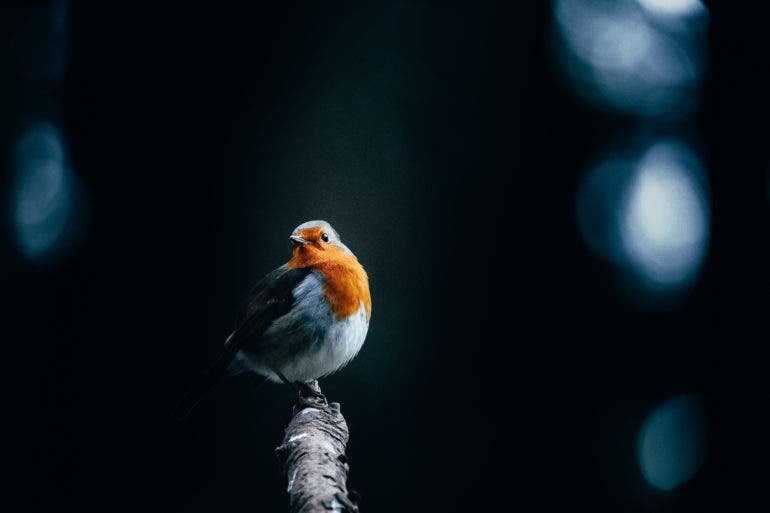
The Phoblographer: Using a telephoto lens for landscape photography is something that I always advocate, but it doesn’t seem like too many photographers do this nowadays. You’re someone who does – explain why you do this and what benefits it gives your creative vision
Paul Boomsma: Using a telephoto lens can really help me to capture the smaller details that are in the scene and bring focus to other things rather than the bigger picture. I find it also really helps to isolate the subject and compresses the scene. For example – photographing someone stood in front of a mountain with a telephoto lens can really help to make it appear more dramatic and make the mountains seem larger than they are.
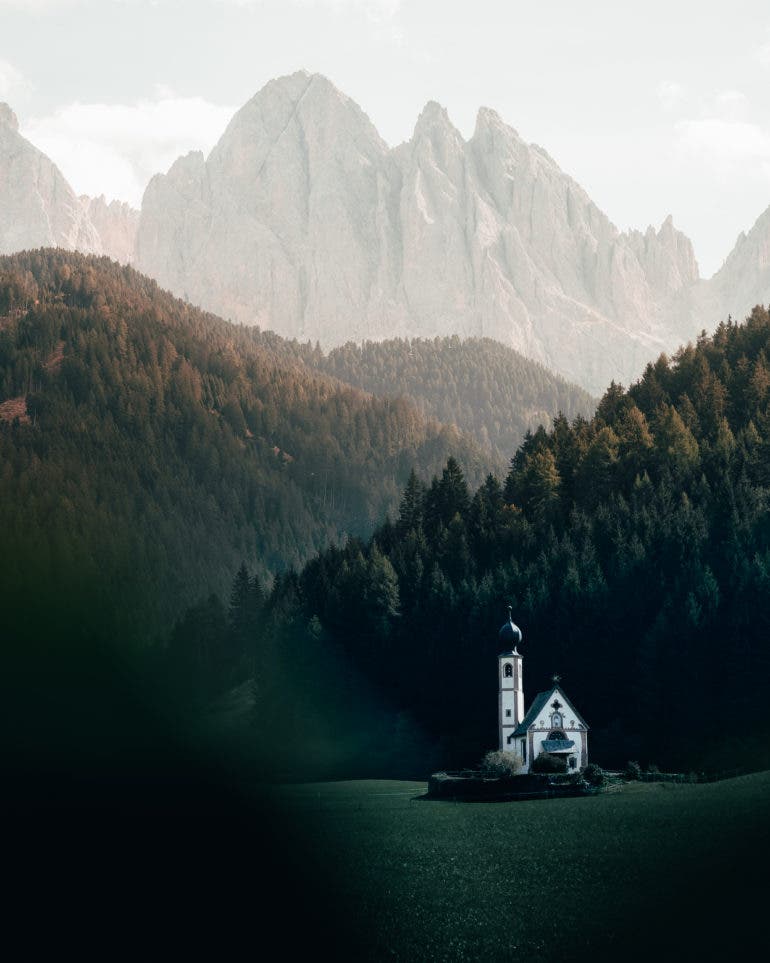
The Phoblographer: Before you head out, what are the goals you set for yourself each time? What happens when sometimes the outcomes don’t turn out as well as you expected?
Paul Boomsma: It depends on the type of shoot and location; the most important things are to stay safe, don’t disrupt nature and be respectful. I’ll plan out each trip excessively, so I’ll set goals to be at certain places at certain times and plan around the weather and what subjects there might be to photograph.
At the beginning of my photography journey, I used to put more focus on getting the image and not thinking about my own safety. This resulted in me being in a lot of dangerous and scary situations – being stuck in quicksand, stuck at 7500ft – dehydrated, burnt and exhausted, crossing rivers with strong currents and other stupid things.
If things don’t work out as expected – if the weather isn’t right, there’s something dangerous in the way, I get lost or can’t get the image I’m after, then I’ll try to go somewhere else in the area, photograph something else or just replan it.
There’s been a few times I’ve gone somewhere to photograph a landscape, and the conditions haven’t been right, but I’ve come away with some wildlife images I’m really happy with instead. An example could be this image I shot of a seagull I shot while on a boat trip exploring the Jurassic Coast. I planned to photograph some sea stacks and the coastline from the view of the boat, but there was really thick fog, and visibility was low. I then changed my focus to some of the birds that were following us and managed to get this photo of a seagull flying low above the water.
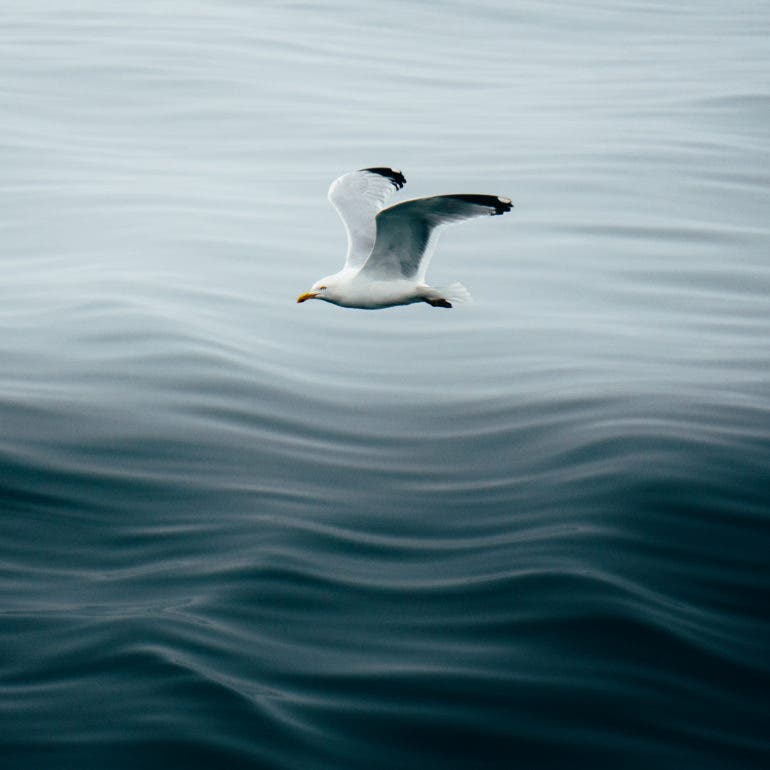
The Phoblographer: There’s of course the aerial perspective to it, but from an awareness or conservation angle, would you say that drones have helped greatly?
Paul Boomsma: I think drones are great, it really expands on your photography and gives you a whole new perspective and allows you to capture things you’d never be able to before unless you had access to a helicopter.
I’m not too sure on the awareness and conservation angle; I’ve heard that drones have helped massively for counting, analyzing, and monitoring wildlife, and observing the surroundings, but I don’t know enough about it.
I think the thing that everyone does need to be extremely careful about though, is not only following the laws, flying in safe areas/altitudes away from people and aircraft, but also away from any wildlife that may be disturbed. That includes birds up in the sky and any animals on the ground.
Some animals are easily startled, some extremely territorial, some could be terrified of the loud buzzing sound, and some birds may see the drone as a threat and attempt to attack it. This would be disastrous for both the bird and the drone.
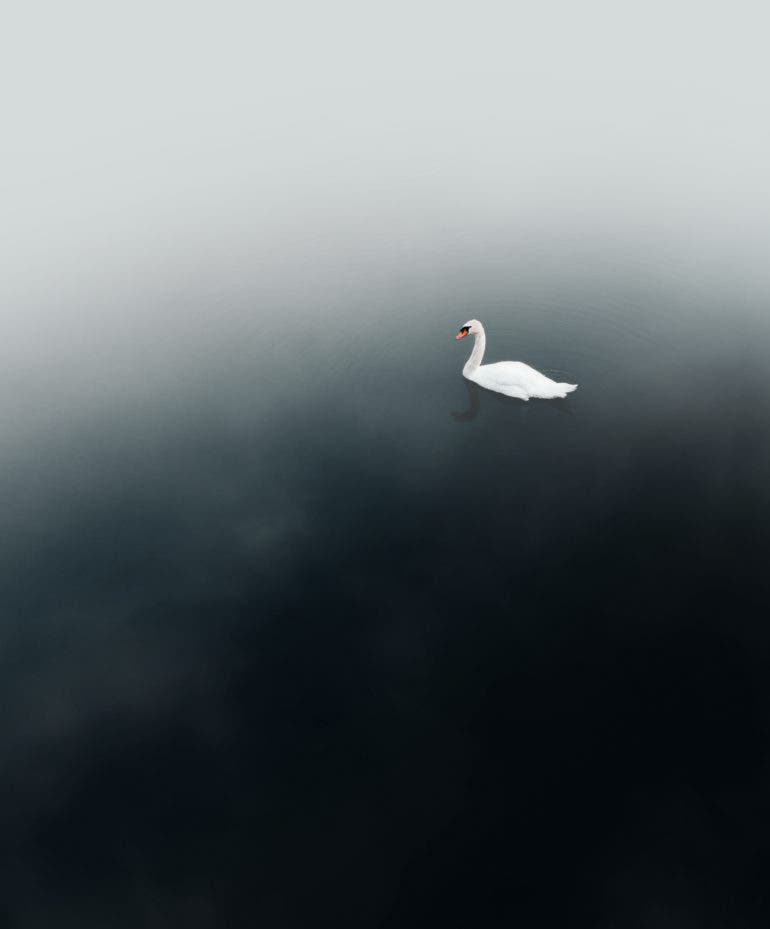
The Phoblographer: You can’t always pick one image, but please pick your current personal favourite and tell us the story behind it. What sets it apart from the rest of your good work?
Paul Boomsma: That’s really difficult! I have a few of personal favorites, these are almost always linked to my personal experiences or achievements, and so I wouldn’t call it my best work, but they are still my favorite because it reminds me of a special memory.
I would have to say it’s probably this photo I took of Vigilance sailing just off the coast of Brixham.
I’ve always found old ships really interesting, and from pretty early on in my photography journey, I always wanted to be able to take a photo of one, but I never had the equipment or the knowledge on how to do it.
I decided to buy my first drone a few months back, and after spending some time practicing and getting comfortable flying, I started researching what old ships sail close to home. That’s when I found Vigilance of Brixham – a gaff-rigged ketch built in 1926. I started planning out how I was going to take photos of the ship and started tracking its movements on MarineTraffic to find out exactly where it typically sails. I then positioned myself on the coast at a place closest to their predicted sailing route, sent up the drone, and everything started to fall into place. I remember the overwhelming feeling of excitement when I could see the image on screen, watching Vigilance sail past on the clear blue water as the sun was hitting off her sails.

The Phoblographer: For me, it would be a trip to a colony of Emperor penguins in Antarctica. If energy, time or money wasn’t a constraint, what would you consider to be the final frontier for your photography?
Paul Boomsma: Honestly, I’ve always wanted to visit somewhere like Antarctica as well. I’ve always been drawn to remote locations away from other people and would love to be able to capture places untouched by humans.
I have always had a dream of visiting Svalbard in arctic Norway. To go on a sailing expedition – visiting remote locations, photographing the landscapes, polar bears, foxes, whales and other wildlife.
The Phoblographer: Technical skills aside, what would you advise photographers to improve upon to better themselves.
Paul Boomsma: I’d probably say to try out new things every once in a while, try photographing something completely different, try different techniques, different editing styles and see what you enjoy. This has helped me a lot throughout my journey. Not only has it helped me find out what I’m really passionate about, but it’s also helped me improve my skills.
The Phoblographer: Procrasination has killed a lot of ideas of mine. Does laziness ever kick in and make you postpone a project or an idea? What do you do to re inspire yourself when something like this happens?
Paul Boomsma: The only time I’ve really had to put off or postpone a project or an idea is because of things like weather, money, time off work and things like that.
I do go through periods where I don’t really feel creative or motivated to take photos though, through these periods, I try to take my mind off photography and give myself a bit of a break and focus on something else.
I normally inspire and motivate myself again by researching new locations to go and shoot, watching videos from that location on YouTube, and looking at other people’s photos.
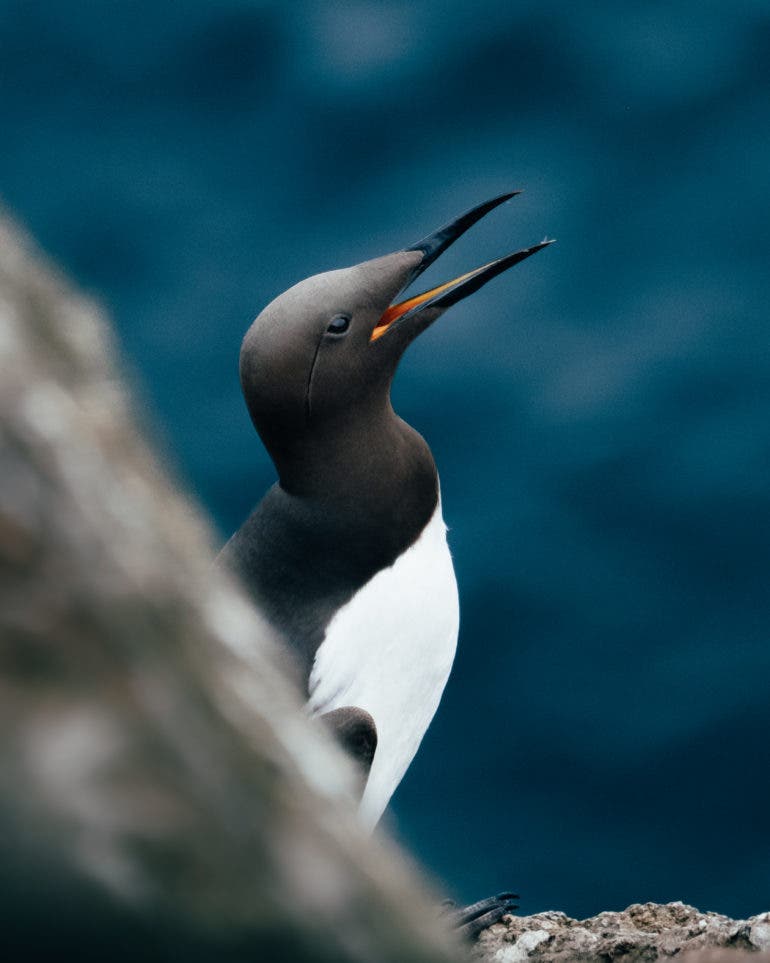
The Phoblographer: It seems like eventually all social platforms start making it difficult for us to get a decent reach for our photos. What are your thoughts on the commercialisation of such platforms, and what are some of the ways photographers can better get their work seen across the world?
Paul Boomsma: This is something that I personally really struggle with, and it can have a real negative effect on your mental health and creativity. Mainly just with Instagram. I’ve often found myself doubting my work when an image doesn’t get enough engagement and end up deleting it or not sharing that type of photo again.
You can then fall into the habit of feeding the algorithm only what you think will do well and not what you actually enjoy creating.
It can also be a lot of hard work and research when trying to achieve better reach. I used to spend hours every day researching, engaging, sharing, and this is all time that I could have spent actually focusing on what I love doing – photography.
I’d say the best thing to do is to stay true to yourself, create what you actually enjoy creating, post to multiple platforms, tag relevant locations and pages and just keep sharing what you love. My favorite platforms to post to are probably 500px and Tumblr. I do enjoy Instagram, but I find other platforms much more rewarding and better for my mental health.

All images by Paul Boomsma. Used with permission. Visit his website, Instagram, and Twitter pages to see more of his work.